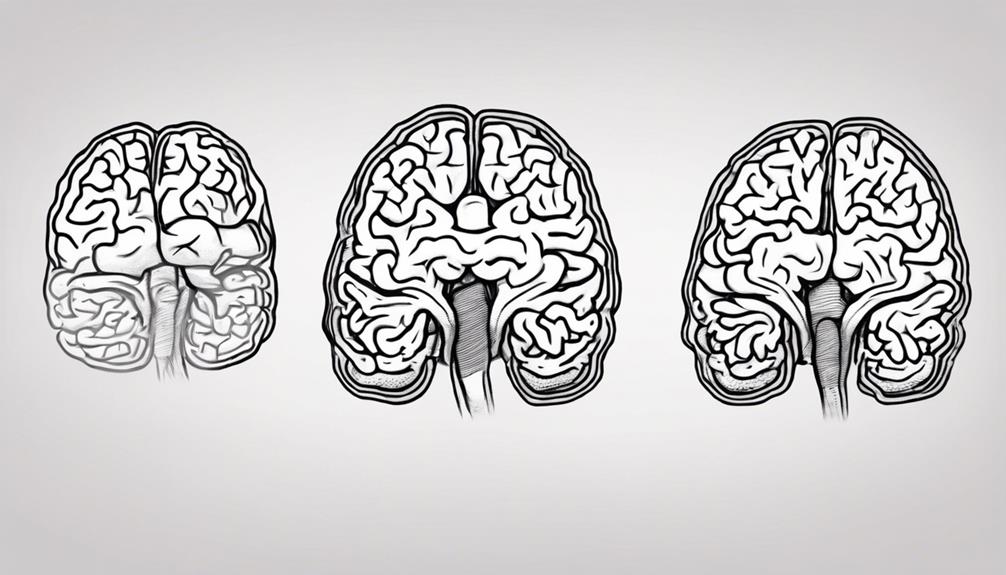Adolescence, a pivotal stage in human development, plays a crucial role in shaping an individual's future. This period is marked by dynamic physical, psychological, and social transformations that lay the foundation for cognitive abilities, emotional intelligence, and social interactions. Understanding the significance of adolescence in the broader context of growth is essential for comprehending how these formative years influence long-term well-being. The complexities of this phase highlight the intricate interplay between biology, environment, and personal experiences, offering valuable insights into the multifaceted nature of human development.
Key Takeaways
- Adolescence is crucial for physical growth and development, including hormonal changes and the maturation of secondary sexual characteristics.
- Social interactions and peer relationships significantly impact identity formation, self-esteem, and mental health during adolescence.
- Neurobiological changes in the brain, hormonal fluctuations, and cognitive development enhance learning, emotional regulation, and critical thinking skills in adolescents.
- Adolescents explore different roles and values, seeking self-awareness and identity formation through developing self-direction skills and clarifying goals.
Puberty and Growth

During adolescence, the physiological process of puberty serves as a pivotal period for rapid physical growth and development in individuals. Puberty, characterized by hormonal changes, marks the onset of the growth spurt in adolescents. The release of hormones, such as testosterone and estrogen, stimulates significant increases in height and weight during this period. These hormonal changes also play a crucial role in the development of secondary sexual characteristics, such as the growth of facial hair in males and breast development in females.
As the body undergoes these physiological changes, puberty prepares individuals for adulthood and reproductive functions. The growth spurt experienced during puberty is essential for achieving adult height and body composition. The timing and progression of puberty vary among individuals but generally occur between the ages of 10 and 14 in girls and 12 and 16 in boys. Understanding the relationship between puberty, growth spurts, and hormonal changes is vital in comprehending the significance of adolescence in shaping physical development.
Social Context Influence
Social context exerts a significant influence on the development of adolescents, particularly in shaping their peer relationships and family dynamics. The interactions within these social spheres can impact an adolescent's perception of themselves, their stress levels, and overall mental health. Understanding these influences is crucial for comprehending the complexities of adolescent growth and development.
Peer Relationships Impact
Adolescents' engagement with their peers plays a crucial role in shaping their social development and behavior. Peer relationships significantly impact adolescents' social development and emotional well-being. Interactions with peers influence the formation of identity, self-esteem, and the ability to navigate social situations. Positive peer relationships offer support, guidance, and a sense of belonging during this critical developmental stage. Conversely, negative peer influences can lead to risky behaviors, challenges in social interactions, and issues with self-esteem. Understanding how to foster healthy peer relationships and navigate potential negative influences is essential for adolescents' growth and development. Adolescents' peer interactions serve as a vital component in their journey towards adulthood, influencing various aspects of their social and emotional well-being.
Family Dynamics Role
The quality of family dynamics during adolescence plays a pivotal role in shaping individuals' social development and overall well-being, influencing their experiences and outcomes during this critical period of growth. The parent-child relationships established during this time significantly impact pubertal maturation experiences. Secure attachments formed in infancy can provide a buffer for girls against harsh social environments during puberty. Additionally, the social context in which adolescents are raised can alter the trajectory and consequences of pubertal changes. Pubertal hormones also impact stress sensitivity, affecting cortisol secretion and mental health outcomes in adolescence. Understanding the intricate interplay between family dynamics, pubertal maturation, and parent-child relationships is essential for comprehending the holistic development of individuals during this crucial stage of growth.
Neurobiological Changes

Adolescence heralds significant neurobiological changes, characterized by structural and functional alterations in the brain, as well as shifts in connectivity patterns. These modifications are intricately linked with hormonal fluctuations, which play a pivotal role in shaping cognitive growth and behavioral responses in teenagers. Understanding the interplay between brain development, hormonal influences, and cognitive functions is essential in elucidating the complexities of adolescence and its impact on overall growth.
Brain Development During Adolescence
During the period of brain development in adolescence, significant neurobiological changes occur, impacting cognitive functions and emotional responses. These changes are crucial for shaping the individual's behavior and decision-making abilities. Here are three key aspects of brain development during adolescence:
- Maturation of the Pre-frontal Cortex: The pre-frontal cortex, responsible for higher-order cognitive functions such as decision-making, reasoning, and impulse control, undergoes significant development during adolescence. This maturation process is essential for improved executive functions and emotional regulation.
- Changes in Gray and White Matter: Neuroimaging studies have revealed dynamic changes in both gray and white matter in the adolescent brain. These changes reflect the ongoing neural pruning and myelination processes that optimize brain connectivity and efficiency.
- Impact on Cognitive Functions: The neurobiological changes during adolescence play a vital role in shaping cognitive functions such as attention, memory, and problem-solving. The development of neural circuits supports the enhancement of these cognitive abilities during this crucial period.
Hormonal Changes Impact
Amidst the intricate web of neurobiological transformations shaping the adolescent brain, the pivotal influence of hormonal changes emerges as a defining factor in restructuring brain architecture and functionality. Hormonal changes during adolescence significantly impact neurobiological development, influencing brain structures, functions, and connectivity. The interplay of hormones like estrogen, testosterone, and cortisol plays a crucial role in shaping the adolescent brain. These hormonal fluctuations affect neuronal communication, synaptic pruning, and the maturation of brain regions involved in decision-making and emotional regulation. Adolescents experience heightened sensitivity to stress due to these hormonal changes, leading to alterations in cortisol secretion and mental health outcomes. Understanding the impact of hormonal changes on neurobiological development is essential for comprehending adolescent behavior, cognition, and emotional well-being.
| Hormonal Changes Impact | Neurobiological Development | Adolescent Development |
|---|---|---|
| Influence brain structures, functions, and connectivity | Crucial role in shaping the adolescent brain | Essential for understanding behavior, cognition, and emotional well-being |
Cognitive Growth in Teens
Enhancing cognitive abilities and functions, significant neuronal developments take place in the adolescent brain during the phase of rapid growth in the pre-frontal cortex. This period of cognitive development is crucial for shaping executive functions, such as reasoning, decision-making, and problem-solving skills. Three key aspects of cognitive growth in teens include:
- Maturation of Executive Functions: The pre-frontal cortex plays a vital role in overseeing higher-order cognitive processes, aiding in planning, organizing, and controlling impulses.
- Changes in Brain Connectivity: Neuroimaging studies reveal alterations in brain structures and connectivity patterns, highlighting the ongoing refinement of cognitive networks during adolescence.
- Impact of Hormonal Changes: Hormones influence brain development, affecting emotional responses and cognitive functions, ultimately shaping adolescents' decision-making processes.
Cognitive Development Impact

Adolescence plays a pivotal role in shaping cognitive development by facilitating significant changes in the brain that contribute to enhanced reasoning and moral thinking. During this period, individuals experience improvements in their reasoning skills and emotional regulation, which are crucial for decision-making and social interactions. The pre-frontal cortex, responsible for higher-order cognitive functions such as decision-making and impulse control, undergoes substantial development during adolescence, allowing teenagers to make more rational judgments. This maturation process is essential for the enhancement of cognitive capacities, leading to better problem-solving skills and improved emotional regulation.
| Cognitive Development Impact | |
|---|---|
| Enhanced Reasoning | Adolescence fosters abstract thinking and rational judgments. |
| Improved Emotional Regulation | Teenagers develop better control over their emotions. |
| Maturation of Pre-frontal Cortex | Decision-making abilities and impulse control improve. |
| Foundation for Adult Skills | Cognitive advancements in adolescence enhance learning and critical thinking abilities. |
Psychosocial Identity Formation
Psychosocial identity formation during adolescence plays a crucial role in shaping an individual's sense of self. This process involves exploring various social roles and cultural contexts to establish a unique identity and values. Adolescents' successful resolution of identity exploration leads to enhanced decision-making abilities and the development of a strong self-concept.
Identity Exploration Process
During the process of identity exploration in adolescence, individuals engage in a dynamic search for self-definition through the integration of various social roles and values. This period of psychosocial identity formation is crucial for adolescents as they navigate the complexities of self-discovery. Here are three key aspects of the identity exploration process:
- Experimentation: Adolescents may experiment with different roles, beliefs, and values to understand what resonates with their sense of self.
- Self-awareness: This phase often involves questioning existing beliefs and values, leading to increased self-awareness and a deeper understanding of personal identity.
- Sense of belonging: Through exploring different identities, adolescents seek to establish a sense of belonging and purpose within their social environments.
Role Confusion Resolution
Role confusion resolution is a critical aspect of psychosocial identity formation, requiring adolescents to clarify their values, beliefs, and goals to establish a cohesive sense of self. This process is essential for developing a stable self-concept and a clear understanding of one's place in society. Adolescents navigate through various roles and identities, experimenting to find where they fit best. Successfully resolving role confusion leads to increased self-esteem and a stronger sense of purpose. By understanding their values and beliefs, adolescents can make informed decisions and form meaningful relationships. This phase of psychosocial development significantly impacts emotional well-being and lays the foundation for healthy relationships and personal growth in adulthood.
Self-Direction Skills

Cultivating self-direction skills during adolescence is paramount for fostering personal growth and preparing individuals for the challenges of adulthood. This period serves as a crucial developmental stage where adolescents hone their decision-making abilities, establish autonomy, and enhance their capacity for self-direction. Here are three essential aspects of self-direction skills that adolescents develop:
- Decision-making: Adolescents learn to make choices independently, considering various options, consequences, and personal values. This skill is vital for navigating complex situations and determining the best course of action.
- Goal-setting: Through setting goals, adolescents identify what they want to achieve and create a roadmap to reach their objectives. This process fosters motivation, perseverance, and a sense of accomplishment when goals are attained.
- Problem-solving: Adolescents develop the ability to analyze problems, brainstorm solutions, and implement strategies to overcome obstacles. These problem-solving skills are crucial for addressing challenges effectively and building resilience.
Autonomy and Connection
Adolescence marks a critical period in human development where individuals are tasked with navigating the delicate balance between autonomy and connection. This phase is characterized by significant social transitions and emotional changes that play a pivotal role in shaping a healthy adolescent. Developing a sense of autonomy during adolescence is crucial as it allows individuals to explore their personal identity, values, and beliefs independently. Simultaneously, maintaining connections with family, peers, and society is essential for fostering healthy relationships and establishing boundaries.
Successfully managing autonomy and connection during adolescence is associated with the development of essential social skills and emotional intelligence. Adolescents who can strike a balance between autonomy and connection tend to form secure attachments and cultivate a strong sense of self. This ability not only influences their immediate relationships but also lays the foundation for their future interactions and overall well-being. In essence, navigating autonomy and connection in adolescence is instrumental in fostering personal growth, resilience, and a sense of belonging in the broader social context.
Finding Purpose

During this critical period of development, individuals in adolescence embark on a journey of self-discovery and exploration to find their sense of purpose and identity. This quest for purpose is essential for their overall well-being and growth. Here are three key aspects related to finding purpose during adolescence:
- Exploration of Values and Interests: Adolescents often engage in activities and experiences that help them understand what they value and what interests them. This exploration allows them to align their actions with their beliefs, leading to a more fulfilling sense of purpose.
- Goal Setting and Achievement: Setting goals provides adolescents with direction and motivation. Achieving these goals, whether big or small, reinforces their sense of purpose and boosts their self-esteem.
- Impact on Mental Health: Research indicates that adolescents who have a clear sense of purpose are more likely to experience positive mental health outcomes. Having a purpose in life can enhance resilience, reduce stress, and contribute to overall psychological well-being.
In essence, finding purpose in adolescence is a crucial component of mental health and personal development.
Adolescent Health and Well-being
The promotion of adolescent health and well-being is a critical investment for both individual flourishing and long-term societal progress. Adolescent health plays a pivotal role in shaping an individual's quality of life and future well-being. Investing in adolescent health not only benefits the young individuals themselves but also has broader implications for economic and social development.
During adolescence, individuals undergo significant physical, mental, and emotional development, making this stage crucial for establishing healthy habits and behaviors that can last a lifetime. Providing adolescents with the necessary support, resources, and education empowers them to make informed decisions, leading to healthier lifestyles and overall well-being.
Addressing adolescent health is essential for achieving global development goals and ensuring a productive and sustainable future for societies worldwide. By prioritizing adolescent health, we can positively influence long-term societal outcomes, enhance productivity, and contribute to the overall social well-being of communities. Adolescents are not just the future but also the present, making their health a cornerstone for building a healthier, more prosperous society.
Global Adolescent Agenda

An overarching framework for enhancing global adolescent health and well-being necessitates a comprehensive approach that addresses key priorities and challenges. Adolescence is a critical period that shapes individuals' health trajectories and influences future societal outcomes. The Global Adolescent Agenda focuses on strategic interventions to improve adolescent health outcomes worldwide, considering the social determinants of health and aligning with broader global health initiatives. Key aspects of this agenda include:
- Leveraging Global Health Initiatives: Integrating adolescent health priorities into existing global health frameworks ensures a holistic approach to addressing the specific needs of this population segment.
- Empowering Through Education: Promoting comprehensive sexuality education, mental health awareness, and life skills training equips adolescents with the knowledge and tools necessary to make informed decisions about their health.
- Advocating for Policy Changes: Engaging policymakers to implement evidence-based policies that support adolescent-friendly healthcare services and create environments conducive to positive health behaviors is crucial for advancing global adolescent health agendas.
Frequently Asked Questions
Why Is Adolescence Important for Development?
Adolescence is important for development due to the intricate interplay of brain development, emotional regulation, identity formation, social interactions, hormonal changes, and physical growth. This period fosters cognitive growth, moral reasoning, and decision-making abilities. Adolescents navigate complex societal influences, shaping their values and perspectives. By adapting to changing roles and responsibilities, adolescents establish a foundation for future growth and well-being, making adolescence a crucial phase for holistic development.
How Does Adolescence Affect in Growth and Development?
Adolescence profoundly influences growth and development through hormonal changes that impact physical maturation and brain development. Social interactions during this period foster emotional maturity, while the body undergoes significant physical changes. Adolescents also engage in identity formation, shaping their future selves. These multifaceted processes during adolescence lay the foundation for overall growth and development, underscoring the importance of this transitional phase in human life.
What Makes Adolescence the Most Crucial Part in Human Growth and Development?
Adolescence is a pivotal stage in human growth and development due to the intricate interplay of brain development, emotional maturity, social relationships, identity formation, hormonal changes, and physical growth. During this period, the brain undergoes significant changes that influence decision-making and emotional responses. Adolescents also experience hormonal shifts that impact physical development. Moreover, the formation of social relationships and exploration of identity shape their future perspectives and behaviors.
Why Is Adolescence the Best Stage of Life?
Adolescence is often hailed as the best stage of life due to its unique characteristics. Identity formation, emotional growth, and social connections play pivotal roles during this period. Additionally, brain development facilitates better decision-making and independence building. Adolescents have the opportunity for self-expression, which fosters creativity and personal growth. These aspects collectively make adolescence a crucial phase for individuals to explore their potential and lay the foundation for their future development.
Conclusion
In conclusion, adolescence can be likened to a caterpillar transforming into a butterfly, a period of significant growth and development. The interplay of physical, social, neurological, and psychological changes during this phase shapes individuals' identities and prepares them for adulthood. Understanding the importance of adolescence in laying the foundation for well-being and success is crucial for promoting positive outcomes in both individuals and society as a whole.
